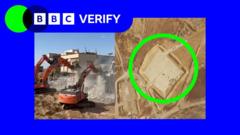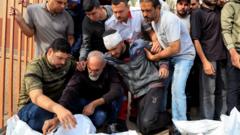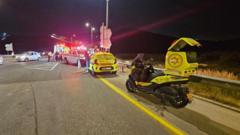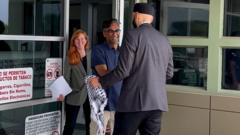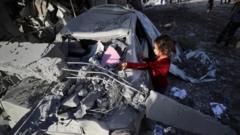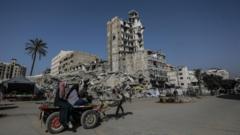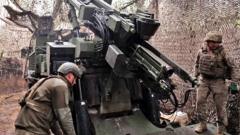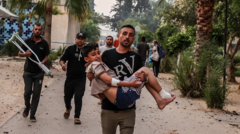Amid ongoing conflict, 33 sick children from Gaza have been evacuated to Jordan, where they receive necessary medical treatment. Their stories reflect both the horrors of war and the hope for recovery.**
Hope in Flight: Evacuated Gaza Children Find Refuge in Jordan for Treatment**
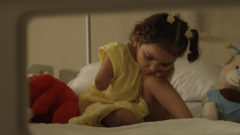
Hope in Flight: Evacuated Gaza Children Find Refuge in Jordan for Treatment**
A poignant journey as children from war-torn Gaza are airlifted to Jordan for critical medical care.**
In a serene twilight, a helicopter soared over the landscape, gliding past illuminated villages that appeared untouched by conflict. "Jordan is so beautiful," exclaimed Safa'a Salha, a mother from Gaza, as she shared a message on her phone. After a grueling journey by road, the last leg of their escape to Amman felt surreal; the helicopter they used to fear now symbolized hope instead of destruction.
Safa'a's son, Youssef, a cheerful 16-year-old sporting a surgical scar, shared a moment of joy with me, as he expressed his excitement about riding in a helicopter. Beside them sat nine-year-old Sama Awad, who is battling a brain tumor and is in urgent need of surgery. "I hope she can get the best treatment here," her mother, Isra, said softly.
What had it been like in Gaza? "Horrible," Isra replied. "It’s impossible to describe; residents are just trying to survive." A total of 33 children have been evacuated to Jordan for medical care, alongside their parents or guardians. Their departure was facilitated by a plan initiated in meetings between U.S. officials and Jordan's leadership, aimed at relocating 2,000 sick children.
Yet, complications remain as the Israeli government has imposed restrictions, hampering the evacuation efforts. According to the Cogat organization, thousands of patients have still been successfully sent abroad for medical treatment despite significant obstacles posed by local hostilities.
Reports reveal that the situation in Gaza is dire, with famine threatening the 2.1 million residents. Humanitarian leaders, like Tom Fletcher, have raised alarms about the urgent need for international intervention to prevent catastrophic outcomes. Within this challenging context, the evacuated children’s arrival in Jordan marks a vital step toward recovery.
In Amman, they join other young patients, including Habiba Al-Askari, who recently faced a triple amputation due to infection from a rare skin condition. Despite her challenges, Habiba’s spirit shines; she is determined to adapt and regain her mobility. "Gaza is beautiful," her mother Rana says, embracing the hope of returning someday, yet facing the daunting reality of what awaits them back home.
As these stories of resilience unfold, the haunting question remains—will they return to a land ravaged by war or find peace in their beloved Gaza? The future is uncertain, but the journey taken by these children exemplifies both the urgency of assistance and the indomitable hope for healing and a return to a better tomorrow.
Safa'a's son, Youssef, a cheerful 16-year-old sporting a surgical scar, shared a moment of joy with me, as he expressed his excitement about riding in a helicopter. Beside them sat nine-year-old Sama Awad, who is battling a brain tumor and is in urgent need of surgery. "I hope she can get the best treatment here," her mother, Isra, said softly.
What had it been like in Gaza? "Horrible," Isra replied. "It’s impossible to describe; residents are just trying to survive." A total of 33 children have been evacuated to Jordan for medical care, alongside their parents or guardians. Their departure was facilitated by a plan initiated in meetings between U.S. officials and Jordan's leadership, aimed at relocating 2,000 sick children.
Yet, complications remain as the Israeli government has imposed restrictions, hampering the evacuation efforts. According to the Cogat organization, thousands of patients have still been successfully sent abroad for medical treatment despite significant obstacles posed by local hostilities.
Reports reveal that the situation in Gaza is dire, with famine threatening the 2.1 million residents. Humanitarian leaders, like Tom Fletcher, have raised alarms about the urgent need for international intervention to prevent catastrophic outcomes. Within this challenging context, the evacuated children’s arrival in Jordan marks a vital step toward recovery.
In Amman, they join other young patients, including Habiba Al-Askari, who recently faced a triple amputation due to infection from a rare skin condition. Despite her challenges, Habiba’s spirit shines; she is determined to adapt and regain her mobility. "Gaza is beautiful," her mother Rana says, embracing the hope of returning someday, yet facing the daunting reality of what awaits them back home.
As these stories of resilience unfold, the haunting question remains—will they return to a land ravaged by war or find peace in their beloved Gaza? The future is uncertain, but the journey taken by these children exemplifies both the urgency of assistance and the indomitable hope for healing and a return to a better tomorrow.

